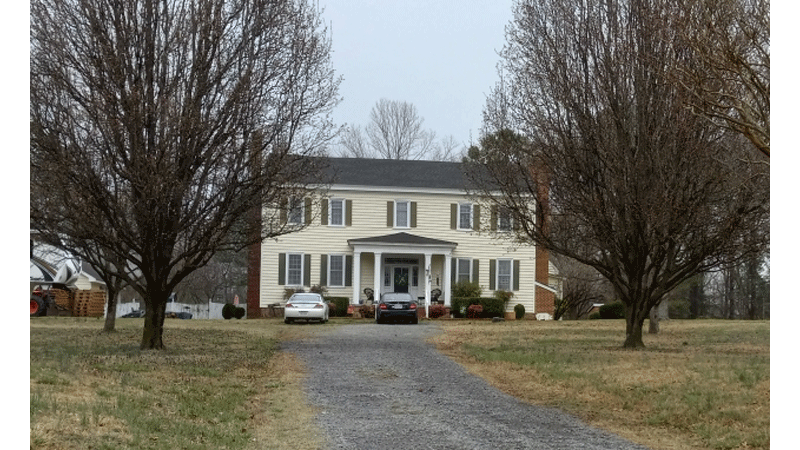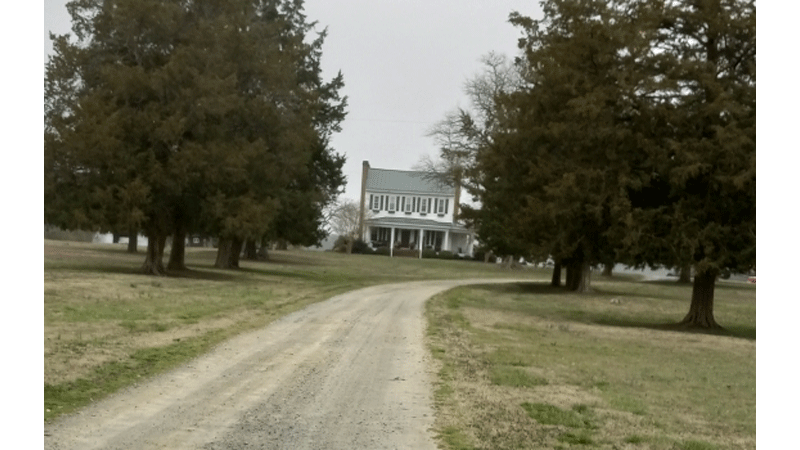The history of Drewryville
Published 8:22 pm Thursday, March 24, 2022
|
Getting your Trinity Audio player ready...
|
By Clyde Parker
What is now Drewryville traces its beginnings to a period soon after 1749 during which year Southampton County was formed – from Isle of Wight. At that time, it was a farm which, originally, was a part of a much larger plantation that Samuel Drewry owned and left to his son Major Humphrey Drewry. Humphrey was the first member of the Drewry family to actually reside in the western part of the new county. He married Miss Frances Simmons in 1787 and built the original Drewry home shortly thereafter. That home, “Cedar Grove” (now “Cedar View”), is still standing a short distance, south, from the village of Drewryville, just off Cedar View Road. There is a large family cemetery at the rear of the residence. In 1825, Frances Simmons Drewry was the first to be interred there. Presently, the property is owned by Jeffrey Pope, great, great, great, great, great-grandson of Major Drewry.
When Major Drewry died in 1844, he left his plantation to his children; a large tract of it, which later became known as the Village of Drewryville, was left to his son, Samuel Drewry II who, earlier, in 1830, had built the original home in the town proper. Originally, the home was called the “Great House”; but, some citizens, in later times, referred to it as “The Thomas Place” — after Person S. Thomas who purchased it in 1875 from the widow of Joseph Drewry. Joseph Drewry had fallen heir to the house upon the death of his father, Samuel Drewry II. That house is still standing; it was extensively restored some years ago by Scott Claud and, for a period of time, the property was referred to as “Three Creeks.”
The Drewryville post office was established on April 4, 1838 and has operated continuously since then except for a period of time during the late 1860s to the early 1870s. After a recent fire, the original post office building was closed; now, there is a temporary structure in use.
In its early days, Drewryville mail was delivered twice weekly, on Wednesday and on Saturday. The route was operated from Jerusalem to Hick’s Ford (Courtland to Emporia). Incidentally, one of the carriers was none other than William Mahone who subsequent to that period was heavily involved with Virginia’s military and political history.
The Atlantic and Danville railroad, which began operations through the community in 1888, named the station Drewrysville; but, after the name of the post office was changed to Drewryville, the station name was likewise changed.
In 1890, a public school was established across the road from the Thomas home. Later, that building was moved to the Pleasant Plain Baptist Church grounds and was used as a school. In 1923, a new school was erected and continued in use until 1969.
Mr. Person Thomas wanted to build a church near his home, so he chose a site not only for a church but also for a pastorium and a cemetery; however, in 1899, he died before his plans could be fulfilled and he was the first to be laid to rest in the beautiful grove which he had selected for a cemetery. In 1902, his widow, Delia Maria Thomas had a house of worship erected on the site. She then gave the building to the Baptists of the community as a memorial to her late husband – Thomas Memorial Baptist Church.
In 1901, parts of the Person Thomas property were divided into lots and sold. Before then, there were only a few homes in Drewryville; but, after the subdivisions were laid out, several houses and stores were built. Those built prior to World War I had a similar architectural style and were like the Samuel and Blanche Johnson home. During the years following World War I, houses of the bungalow type were constructed.
In 1923, the Methodists of the community, who had been attending old Peete’s Church, abandoned that landmark and erected a new church in the town.
Through the efforts of Mr. T. P. Wynne and with the assistance of others the first sidewalks were laid in Drewryville. Until the town was divided into lots, the main road north and south passed to the rear of the present homes on the west side of Main Street. At that time, the main east-west road (now called Old Belfield Road) fronted the Thomas home until highway 58 was constructed in 1928.
The Bank of Drewryville was established in 1917 with Jesse Lee as cashier but the bank was moved to Courtland about 20 years later.
Over the years, Drewryville has had as many as four or five general merchandise stores in operation simultaneously.
Among those was the general merchandise store owned and operated by Samuel P. Johnson who established his business in Drewryville after relocating it from nearby Arringdale in the early 1900s. The Johnson family — Samuel and Blanche and their daughters Brooks, Elizabeth and Nelle and son “S. P.” were residents of, and actively involved in, the Drewryville community for many years. During the years just prior to and during World War II, both Elizabeth and Nell taught school there. Their home was located just across the street from the school property.
Another early-day Drewryville business was J. W. Claud & Co. – a general merchandise store, owned by John William Claud — which had been located in Arringdale since 1910; the business relocated to Drewryville in 1920. The business is still active as J. W. Claud & Son, Inc. and is owned by John M. Claud, grandson of John William Claud. The Claud family has been a significant part of the Drewryville community for generations which includes present-day resident Scott Claud who is a great-grandson of John William Claud.
CLYDE PARKER is a retired human resources manager for the former Franklin Equipment Co. and a member of the Southampton County Historical Society. His email address is magnolia101@charter.net.







